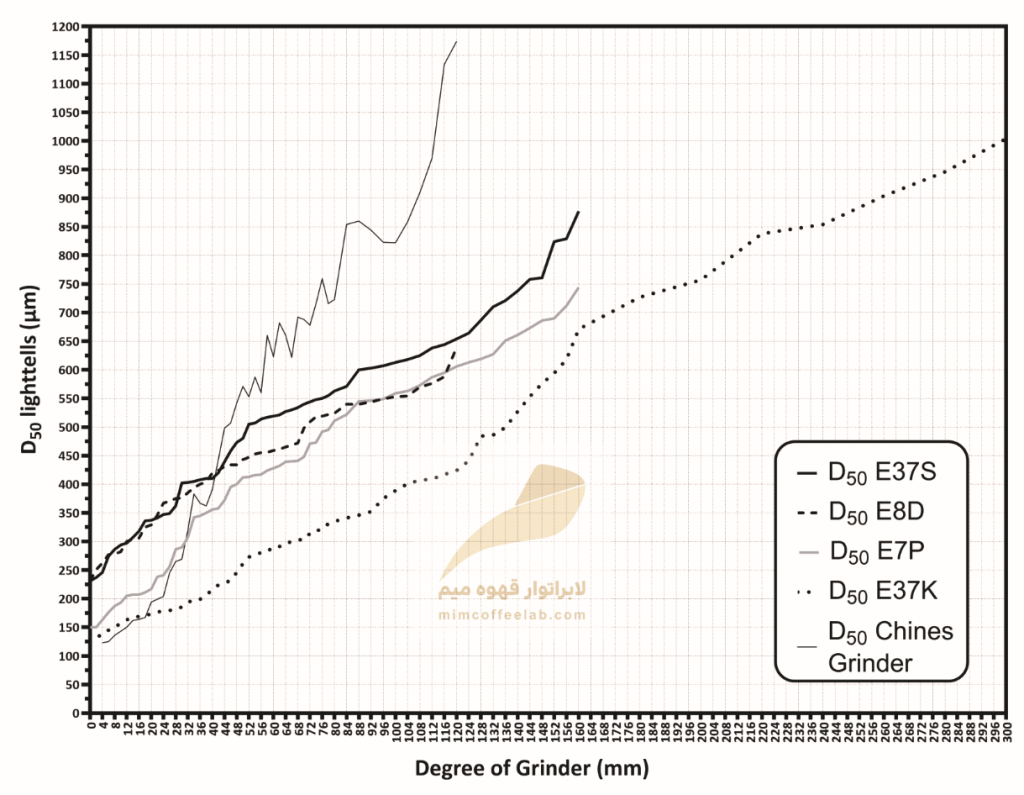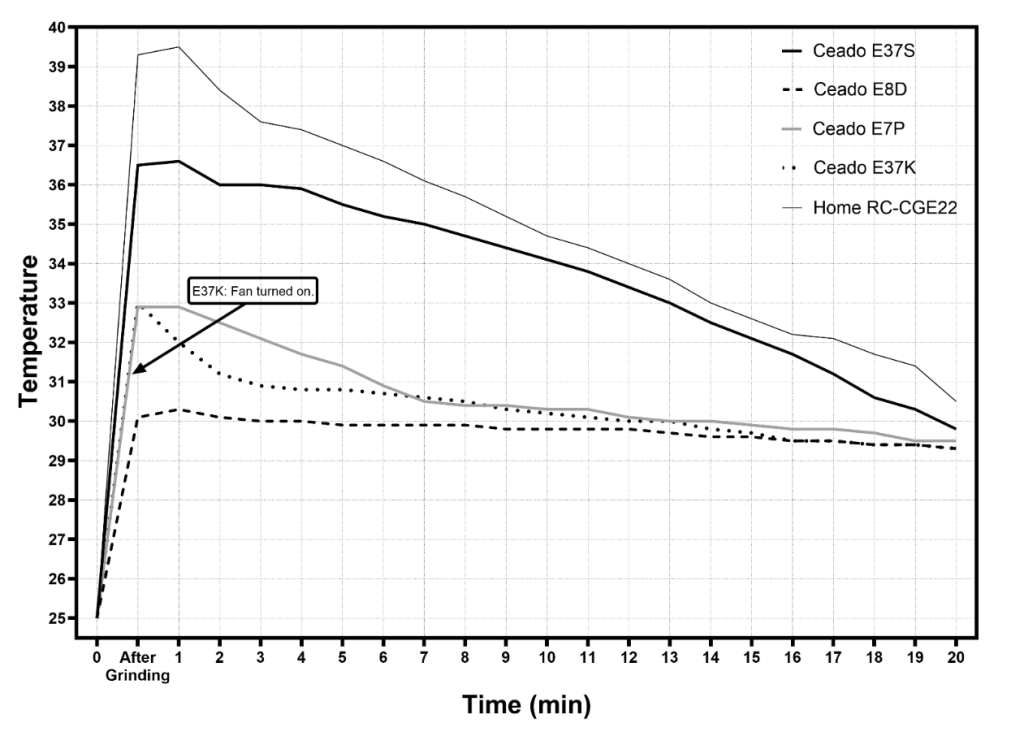Performance Assessment and Comparative Analysis of Ceado Coffee Grinder Models E37K, E37S, E8D, and E7P, Including a Comparison with a Chinese Grinder
Authors: Masoud Naderlou¹, Hesam Mashhadi²
1: Senior Researcher, Mim Coffee Lab (Corresponding Author)
2: Researcher, Mim Coffee Lab
Email Address: [email protected]
Website: www.mimcoffeelab.com
1. Introduction, Problem Statement, and Objective
In recent decades, the coffee industry has witnessed significant advancements in specialized equipment such as coffee grinders. One of the most critical factors affecting the final cup quality is the type and performance of the grinder used. The size and uniformity of ground coffee particles directly influence extraction quality and flavor characteristics. Therefore, choosing a precise, consistent, and well-engineered grinder can make a significant difference in the overall coffee experience. This study, conducted by the Mim Coffee Lab, compares four models from Ceado—E37K, E37S, E8D, and E7P—with a standard Chinese grinder (Home RC-CGE22). The research focuses on four key performance parameters: grind particle distribution (D50), heat management, dosing consistency, and burr depth. The ultimate goal is to provide detailed guidance to coffee professionals and enthusiasts on selecting the right grinder based on actual operational needs.
2. Tools and Equipment used
A range of precise, professional-grade tools was used to ensure data reliability. The Lighttells CM200 was employed for particle size analysis and D50 measurement, Kruve sifters for cross-validation, and the WTC 2000 precision scale for weighing. A custom-designed burr depth gauge and the Testo 175 T3 thermometer were used to measure burr depth and grinder heat, respectively. The test coffee was Colombian Arabica with a medium roast (63 Agtron Gourmet), chosen to reflect realistic brewing conditions. The laboratory environment was tightly controlled for temperature and humidity, ensuring minimal external influence on results. Cleanliness, accurate calibration, and standardized testing procedures contributed to high repeatability across experiments.

3. Methodology
Each grinder’s zero point (minimum grinding range without burr contact) was established, followed by millimeter-accurate calibration markings. In each test, 10 grams of coffee were ground at various marked grind settings, with the grinder cleaned between uses to avoid residue contamination. All tests were repeated three times, and averages were used for analysis. The particle distributions and D50 values were analyzed using the CM200 and Kruve sifters. Then, each grinder was run 20 consecutive times at a consistent D50 target (400 microns) to measure weight consistency. Burr depths were assessed using a mechanical depth gauge, and a continuous 200g grinding session was conducted to record heat profiles and evaluate the grinders’ heat dissipation capabilities.
4. Results
The Ceado E37K showed the best overall performance. With its powerful 850W motor, low 290 RPM speed, conical burrs, and built-in fan, it delivered extremely consistent grind particle sizes across a wide range of settings while maintaining dosing accuracy. Its ability to retain low fines at finer grinds and introduce coarser particles at higher settings contributed to excellent espresso and filter brewing outcomes. The E37S followed closely, offering excellent grind consistency with its 83mm flat burrs and high-speed motor (1480 RPM). It’s suitable for cafes with moderate to high traffic, particularly those working with lighter roasts. The E8D was ideal for high-volume retail and commercial use, grinding up to 270g per minute for espresso with impressive accuracy and stability. The compact E7P performed well in low-traffic cafes, offering consistent dosing and particle distribution while remaining budget-friendly.


5. Recommendations
Based on the findings, the E37K and E37S are highly recommended for high-traffic cafés and professional environments that demand grind precision and stability. For retail or bulk coffee grinding, the E8D stands out with its high speed and consistent particle output. The E7P is a smart choice for smaller operations or as a backup grinder in more active settings. Overall, Ceado grinders demonstrated clear advantages over the Chinese grinder in terms of grind consistency, thermal stability, dosing precision, and build quality. Mim Coffee Lab recommends choosing grinders based on operational requirements, roast type, and expected output to achieve the best possible cup quality. This study highlights the importance of investing in high-performance equipment for optimized extraction and a superior coffee experience.
Share It